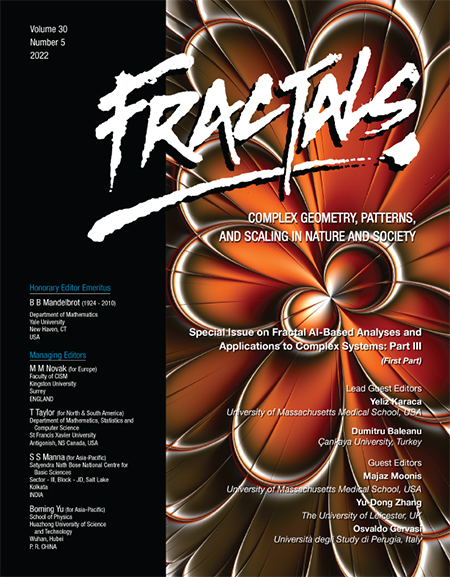ON THE ANALYSIS OF FRACTAL-FRACTIONAL ORDER MODEL OF MIDDLE EAST RESPIRATION SYNDROME CORONAVIRUS (MERS-CoV) UNDER CAPUTO OPERATOR
Abstract
In this paper, the dynamical behavior of Middle East respiration syndrome coronavirus (MERS-CoV) via a sense of Caputo fractal-fractional order system of differential equation is established. A novel approach of fractional operator known as fractal-fractional Riemann–Liouville derivative is applied to the model considered. Moreover, fractal-fractional derivative is applied to the said problem. Furthermore, the existence and uniqueness of the solution of the considered model are verified by the fixed-point theory approach. The local and global stability of developed system are investigated with the help of the Ulam–Hyers stability technique from nonlinear functional analysis. The fractal-fractional type Adams–Bashforth iterative method is used to establish the numerical solution of said problem. The proposed model is simulated by considering different fractal dimensions (𝜃) and fractional order (δ), converging to the integer order. Hence, it is evident that all the compartmental quantities possess convergence and stability in fractal-fractional form. Moreover, the Fractal-fractional techniques may also be used as a powerful technique/tool to investigate the global dynamics of the disease. However, it can be concluded from the results that quick recovery is possible for human population in the pandemic if there is no animal interaction with humans. In future, we are planning to extend the reported analysis to other fractional (fractal-fractional) operators. Furthermore, the behavior of different infectious models can also be analyzed with the help of newly developed scheme at different fractional orders lying between 0 and 1.


